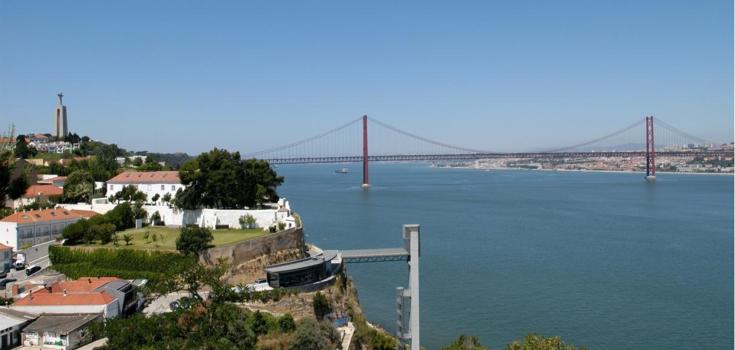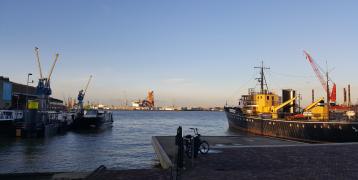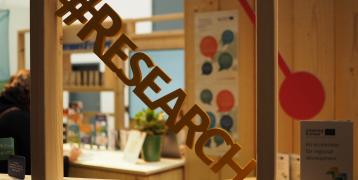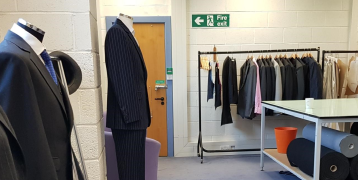Reshoring and nearshoring for stronger European Value Chains
The COVID-19 pandemic and the Ukraine war have highlighted some of the vulnerabilities of global value chains, and the need to diversify and strengthen them. The European Commission has recognised the importance of building more resilient and sustainable supply chains and has taken steps to promote the development of European Value Chains (EVCs) in strategic industries to promote European industrial autonomy and the green transition.
The European Commission has established a range of policies and initiatives to support the development of EVCs, including the Interregional Innovation Investments (I3) that aims to support the development of interregional innovation projects and value chains with an emphasis on fostering private sector involvement. Interreg Europe with its focus on improving public policies offers opportunities for synergies with the I3, namely in sharing policy learning and identifying areas for joint investment.
The Interreg Europe project BRIDGES has developed a methodology to identify competitive advantages and interregional complementaries for building European Value Chains through reshoring and nearshoring opportunities. The last phase of the BRIDGES project was dedicated to value chain-based development as an approach to enhance regional resilience.
The Helsinki-Uusimaa region in Finland has adopted the methodology to foster the growth of the renewable and recyclable textile industry, which offers valuable lessons for other regions looking to promote the reshoring and nearshoring of industrial activities.
The New European Innovation Agenda, the European Green Deal and the European industrial strategy all prioritise the establishment of green and strategic industrial ecosystems to drive digital and twin transitions, providing windows of opportunity that can be predicted and prepared for.
The EU Strategy for sustainable textiles, which was recently introduced, has also created an opportunity for the Helsinki-Uusimaa region to encourage the growth of a sustainable textile industry.

The textile sector can be transformed into a more sustainable industry. Textiles consumption in Europe has the fourth-highest environmental and climate change impact, trailing only food, housing, and mobility. The textiles and clothing industry remains a vital contributor to the EU’s economy and could play a critical role in advancing the circular economy.
This industry is comprised of over 160.000 companies and employs 1.5 million individuals, with a turnover of EUR 162 billion in 2019. Like many other European regions, the textile industry in Helsinki-Uusimaa was relocated to low-cost countries such as China during the 1980s and 1990s.
Reshoring and nearshoring in the textile industry
Reshoring and nearshoring are two related concepts that involve relocating business operations, particularly manufacturing, closer to the target market or to the company’s home country.
- Reshoring refers to the practice of bringing back production or manufacturing operations to the home country from a foreign location where they were previously offshored. The main motivation for reshoring is often to reduce costs, improve quality control, and boost domestic employment opportunities.
- Nearshoring, on the other hand, involves moving production or manufacturing operations to a nearby country with lower labour costs, favourable tax laws, and other competitive advantages.
BRIDGES lead partner, Ninetta Chaniotou, Regional Council of Kainuu, Finland, recommends that regional policymakers must integrate value chain mapping tools and associated competencies into their regional development initiatives. In addition, regional policymakers must take advantage of European interregional calls to reflect, identify and build shared scientific and technological capacities.
Such an approach helps to re-industrialise (reshoring) and to know in which types of partnerships to invest efforts in terms of technological and competitiveness complementarities (nearshoring). In Helsinki-Uusimaa, the value chain mapping of the renewable and recycled textile industry uncovered reshoring and nearshoring opportunities.
Reshoring textile industrial activities
The strong research activities with two national textile recycling projects, frontier research on cellulose based textile fibre at Finnish universities, the access to raw materials with the forest industry, and VTT roadmap Finnish textile industry for 2035 provided strong impetus for reshoring textile industrial activities.
Nearshoring textile industrial activities
The Baltic countries offer textile manufacturing opportunities not only because of their lower cost compared to Finland but also due to their geographical proximity, which leads to reduced freight costs and faster time-to-market. Additionally, there are opportunities for nearshoring and interregional collaboration in terms of raw material inputs, intermediate goods production, and joint development.
These opportunities can be found in countries like:
- Sweden
- Denmark
- Italy (Friuli-Venezia-Giulia, which focuses on cellulose and specialisation alignment)
- France (which has a strong textile, garment, and research market)
- Portugal (Centro and Norte, which focus on textile production and cellulose, as well as textile-specialised innovation intermediaries).
Other methodologies for value chain mapping exist. In INNO INDUSTRY, the good practice strategic ecosystem development, developed by the Latvia Ministry of Economy, provides a tool for identifying complementarities and promoting reshoring. The initiative aims to enhance innovation, attract investments, and improve infrastructure and legislation through triple helix collaboration.
It uses an 8-step ecosystem-based approach to analyse three key value chains and encourages organisations to conduct self-analysis for competitiveness and future development. The ecosystem-based approach enables the involvement of triple-helix stakeholders from industry, academia, and the public sector to upgrade existing value chains and create cross-sectoral cooperation.








